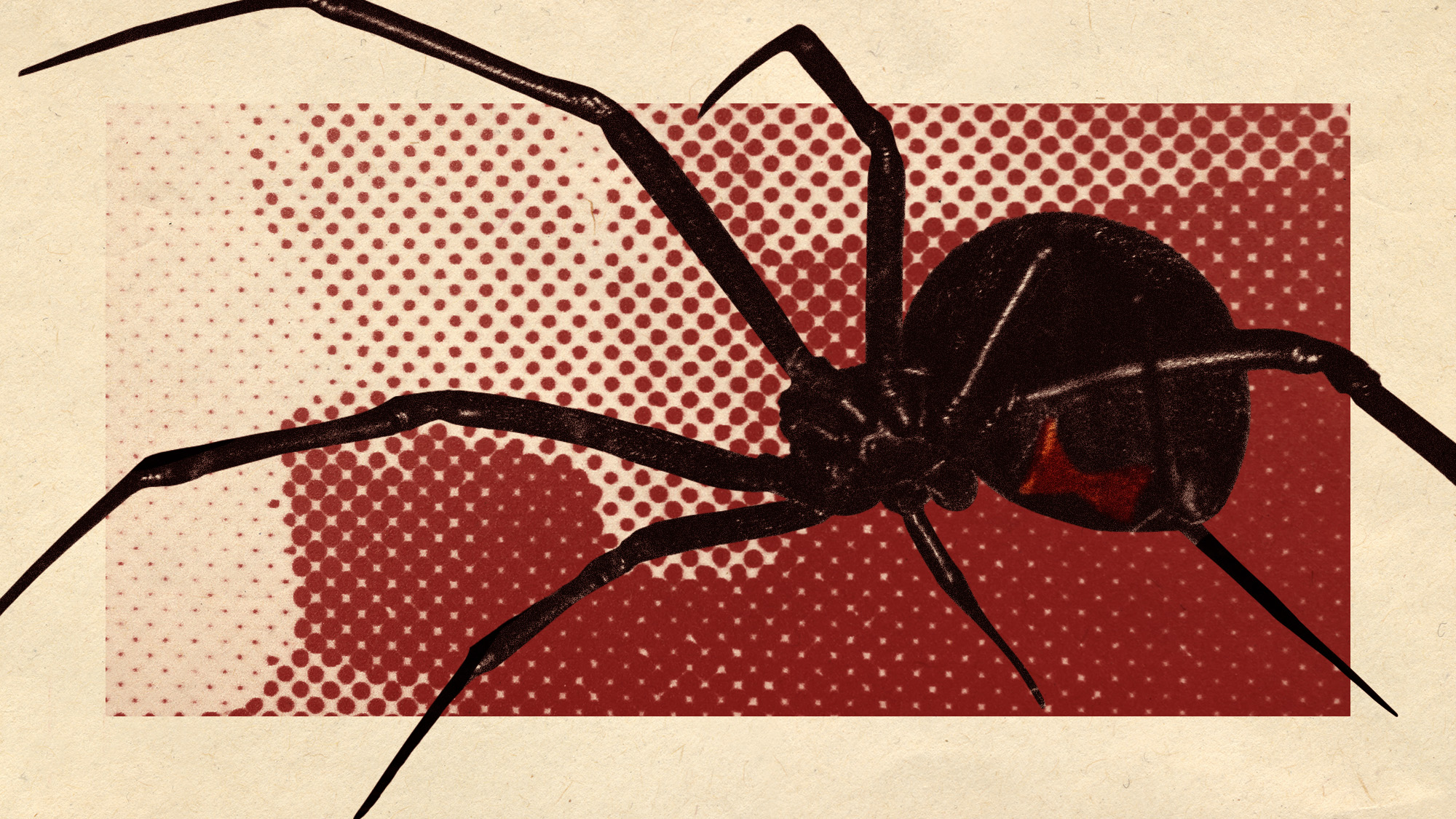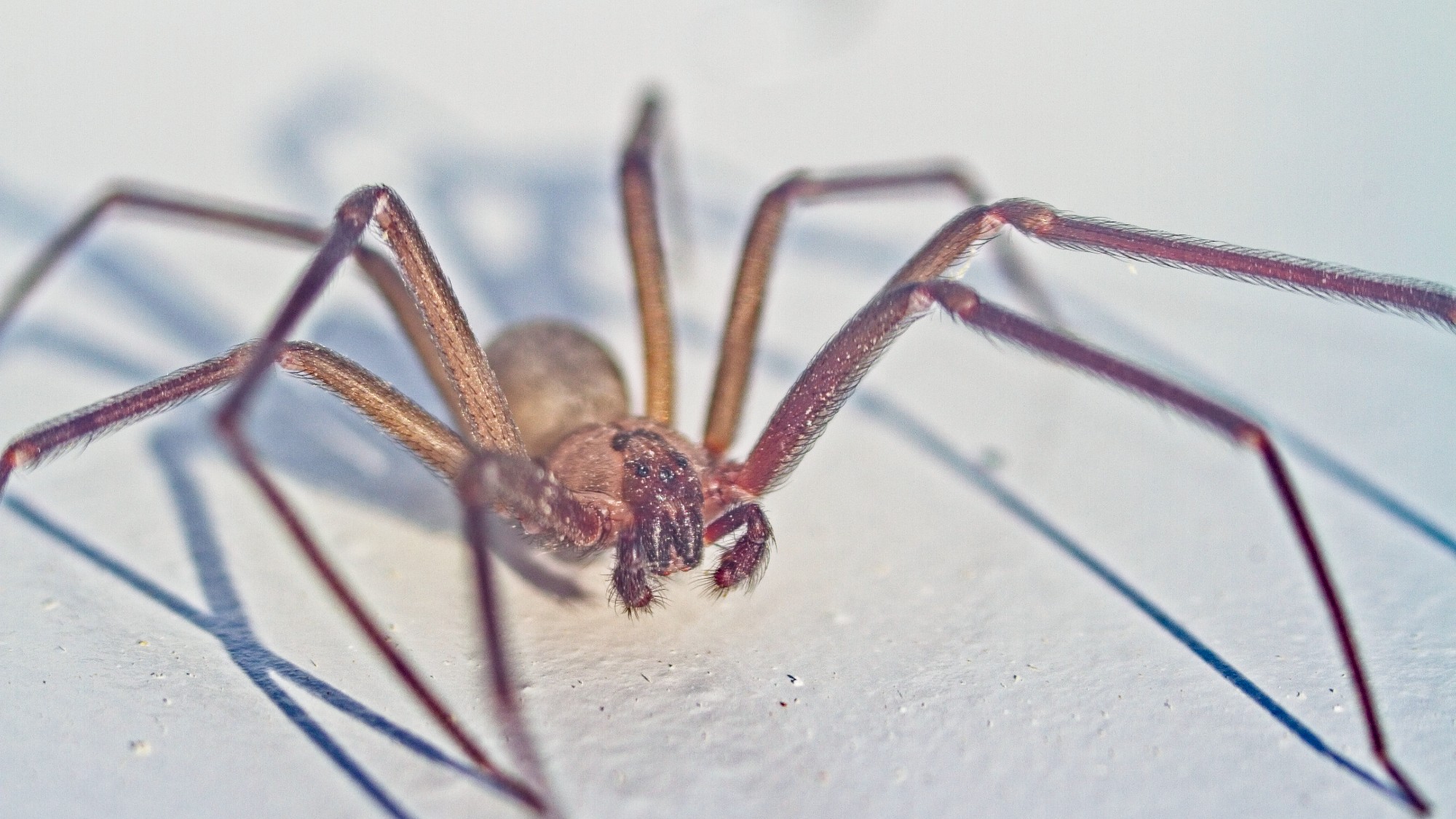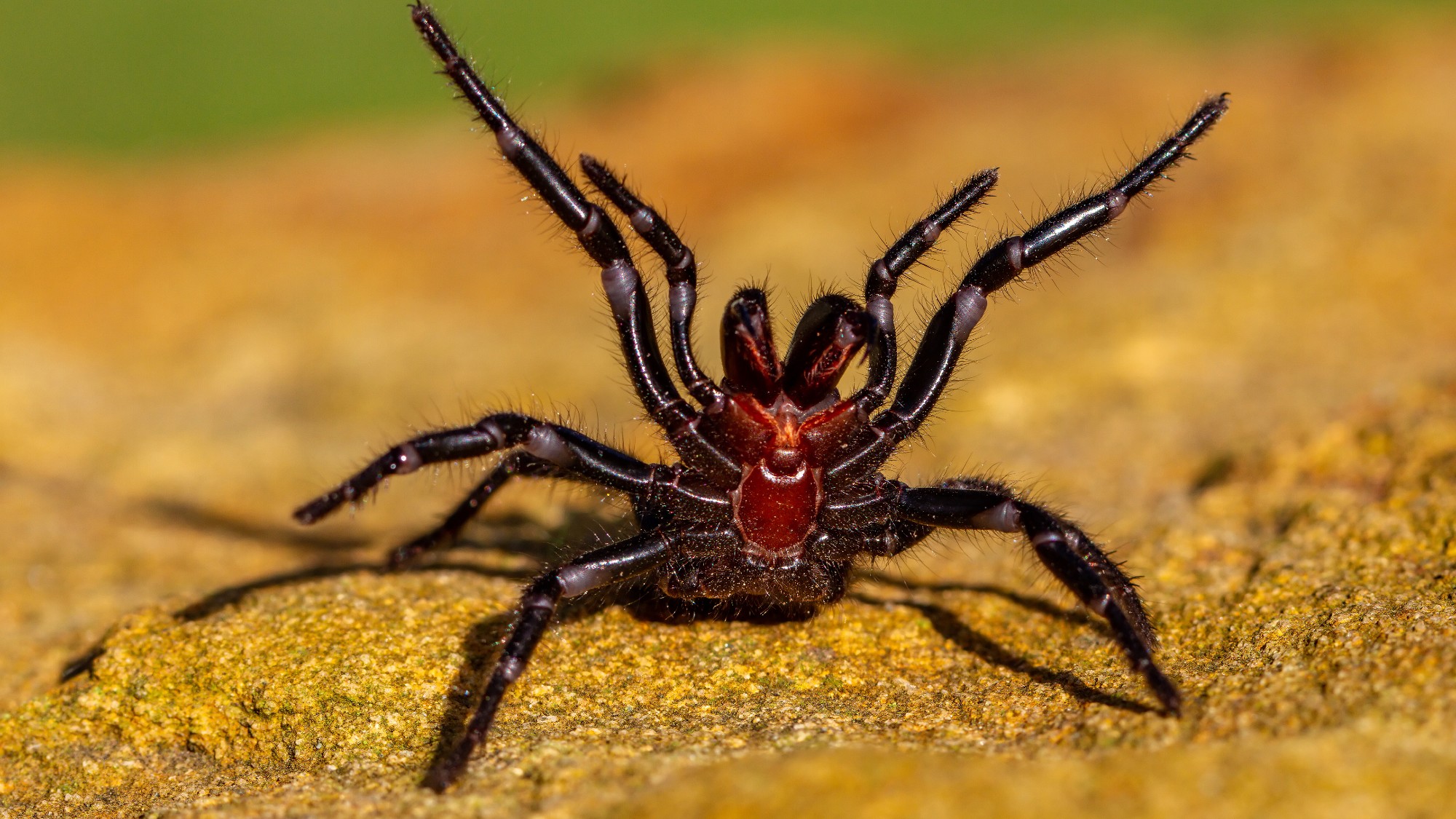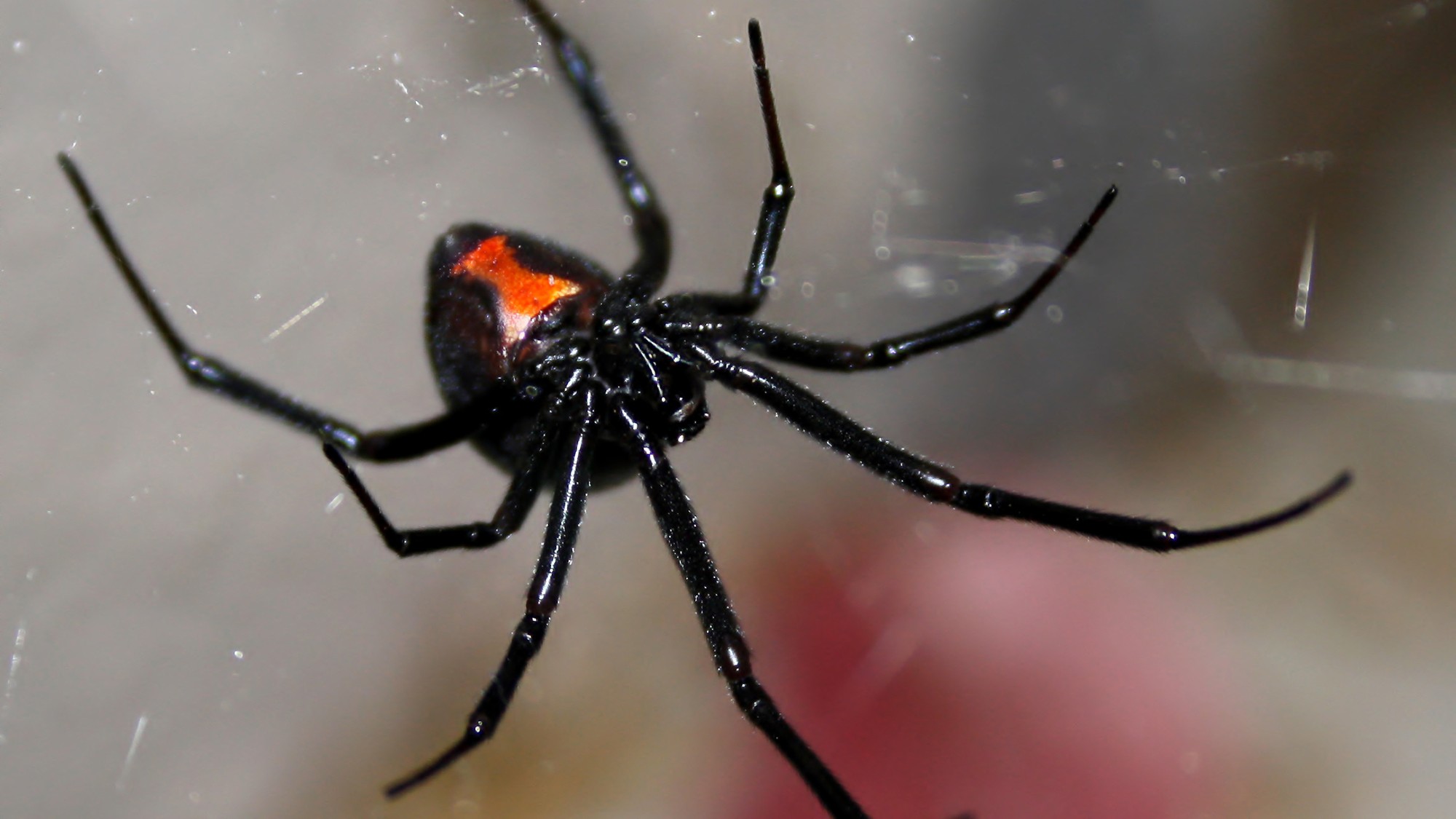6 of the scariest spiders in existence
These 8-legged critters can cause serious harm


There are close to 50,000 known species of spiders, with another 50,000 estimated to be undiscovered. While the creepy arachnids can be frightening to look at, many are harmless to humans. However, there are some that have the ability to cause nasty bites — and in some cases, be deadly. Here are six of the scariest spiders to look out for and steer clear of.
1. Yellow sac spiders

Black-footed yellow sac spider
There are many species of sac spiders, but the yellow sac spider (Cheiracanthium inclusum) is the most notorious. While not necessarily deadly, "the spider's venom is a cytotoxin (a substance that destroys a cell or impairs its function) that can produce necrotizing lesions" in more extreme cases, said Britannica. The species is indigenous to most of the U.S. except the northernmost states. Yellow sac spiders "probably account for more human bites than any other type of spider," said Michigan State University. Humans usually incur bites outdoors while gardening in the summer.
2. White-tailed spider

White-tailed spider
Identified by a "dark reddish to grey, cigar-shaped body and dark orange-brown banded legs," the white-tailed spider (Lampona cylindrata) is native to Australia, said the Australian Museum. Their bites, while not deadly, can cause "nausea, vomiting and a nasty headache," said the BBC. Most of the time, they just cause skin irritation, although their scary appearance has brought about misconceptions. "Unlike other poisonous spiders, white-tailed spiders are common but not aggressive. They prey on other spiders, helping control harmful species," said Immediate Response. "Despite this, urban legends have made them seem more deadly than they really are."
The Week
Escape your echo chamber. Get the facts behind the news, plus analysis from multiple perspectives.

Sign up for The Week's Free Newsletters
From our morning news briefing to a weekly Good News Newsletter, get the best of The Week delivered directly to your inbox.
From our morning news briefing to a weekly Good News Newsletter, get the best of The Week delivered directly to your inbox.
3. Brown recluse spider

Brown recluse spider
The brown recluse spider (Loxosceles reclusa) is one of the only common spiders in the U.S. that is considered venomous — though their bite rarely, if ever, kills a person. Its venom "destroys the walls of blood vessels near the site of the bite, sometimes causing a large skin ulcer," said Britannica. These spiders can be identified by their pale brown color and eye pattern where six eyes are "arranged in three pairs in a semicircle pattern with a space between each pair," said the Alabama Cooperative Extension System (ACES). The brown recluse likes to hide and hunt prey. It can bite out of self-defense and release a harmful cytotoxin. While usually the bite heals in approximately three weeks, in some cases it "can cause necrotizing wounds, so you'll want to see a doctor immediately if you think you've been bitten by one," said Prevention.
Take our spider quiz
4. Funnel-web spider

Sydney funnel-web spider
There are several funnel-web spiders, but the most well-known is the Atrax robustus. These arachnids, found in Australia, are "large, black aggressive spider[s] with large powerful fangs," said the University of Melbourne. Their bites can be incredibly dangerous. The spider's venom "contains a toxin that attacks the human nervous system, so bites need immediate medical attention — otherwise, a victim can die within 15 minutes," said Live Science. The venom from this spider can cause "numbness around the mouth and spasms of the tongue, nausea and vomiting, abdominal pain, acute gastric dilatation, profuse sweating, salivation, lacrimation [and] piloerection," said the University of Melbourne.
5. Black widow

Female black widow spider
When you think of a deadly spider, the black widow (Latrodectus genus) is likely the kind that springs to mind. There are several species of black widows, mostly native to North America. Both male and female black widows are dangerous, but the female ones are famous for their easily identifiable shiny black exteriors and red bowtie patterns. The spiders are "formidable predators that feed on live insects, other spiders and arthropods, as well as on other members of their species," said the University of Tennessee.
The bite of a black widow can be extremely toxic and is "known to disrupt signals in the nervous system, thus causing muscle pain and spasms, rapid heartbeat and high blood pressure," said Live Science. "In some cases, it leads to inflammation that can ultimately restrict breathing." The name "black widow" comes from the female arachnid's tendency to eat the male after mating.
A free daily email with the biggest news stories of the day – and the best features from TheWeek.com
6. Brazilian wandering spiders

Brazilian wandering spider
There are nine species of Brazilian wandering spider (Phoneutria genus), also called the "armed" or "banana" spider, and they have some of the most dangerous bites on Earth. These spiders can be a variety of colors but usually have yellow striped legs. "Females have more toxic venom compared to males, and a bite can lead to raised blood pressure, fever, vomiting, sweating and breathing difficulties," said the BBC. "In some extreme cases, it can lead to paralysis, respiratory arrest and death, if left untreated." A bite can be fatal in approximately 60 minutes without medical intervention. These insects tend to hide in banana plants and can make their way into shipments.
Devika Rao has worked as a staff writer at The Week since 2022, covering science, the environment, climate and business. She previously worked as a policy associate for a nonprofit organization advocating for environmental action from a business perspective.
-
 More than a zipper: Young Black men embrace the ‘quarter-zip movement’
More than a zipper: Young Black men embrace the ‘quarter-zip movement’The Explainer More than a zipper: Young Black men embrace the ‘quarter-zip movement‘
-
 Spaniards seeing red over bullfighting
Spaniards seeing red over bullfightingUnder the Radar Shock resignation of top matador is latest blow in culture war over tradition that increasingly divides Spain
-
 Broadway actors and musicians are on the brink of a strike
Broadway actors and musicians are on the brink of a strikeThe explainer The show, it turns out, may not go on
-
 Primatologist Jane Goodall dies at 91
Primatologist Jane Goodall dies at 91Speed Read She rose to fame following her groundbreaking field research with chimpanzees
-
 Trouble on the seas as cruise ship crime rates rise
Trouble on the seas as cruise ship crime rates riseThe Explainer Crimes on ships reached nearly a two-year high in 2025
-
 Smart glasses and unlocking ‘superintelligence’
Smart glasses and unlocking ‘superintelligence’The Explainer Meta unveiled a new model of AI smart glasses this week, with some features appearing ‘unfinished’ at a less-than-perfect launch
-
 Roblox, one of the world's most popular video games, has become a bastion of hate speech
Roblox, one of the world's most popular video games, has become a bastion of hate speechThe Explainer The platform has over 111 million daily users
-
 25 slang words and phrases we can thank (or blame) Gen Z for
25 slang words and phrases we can thank (or blame) Gen Z forIn Depth Younger Americans have put their stamp on our language with these neologisms



